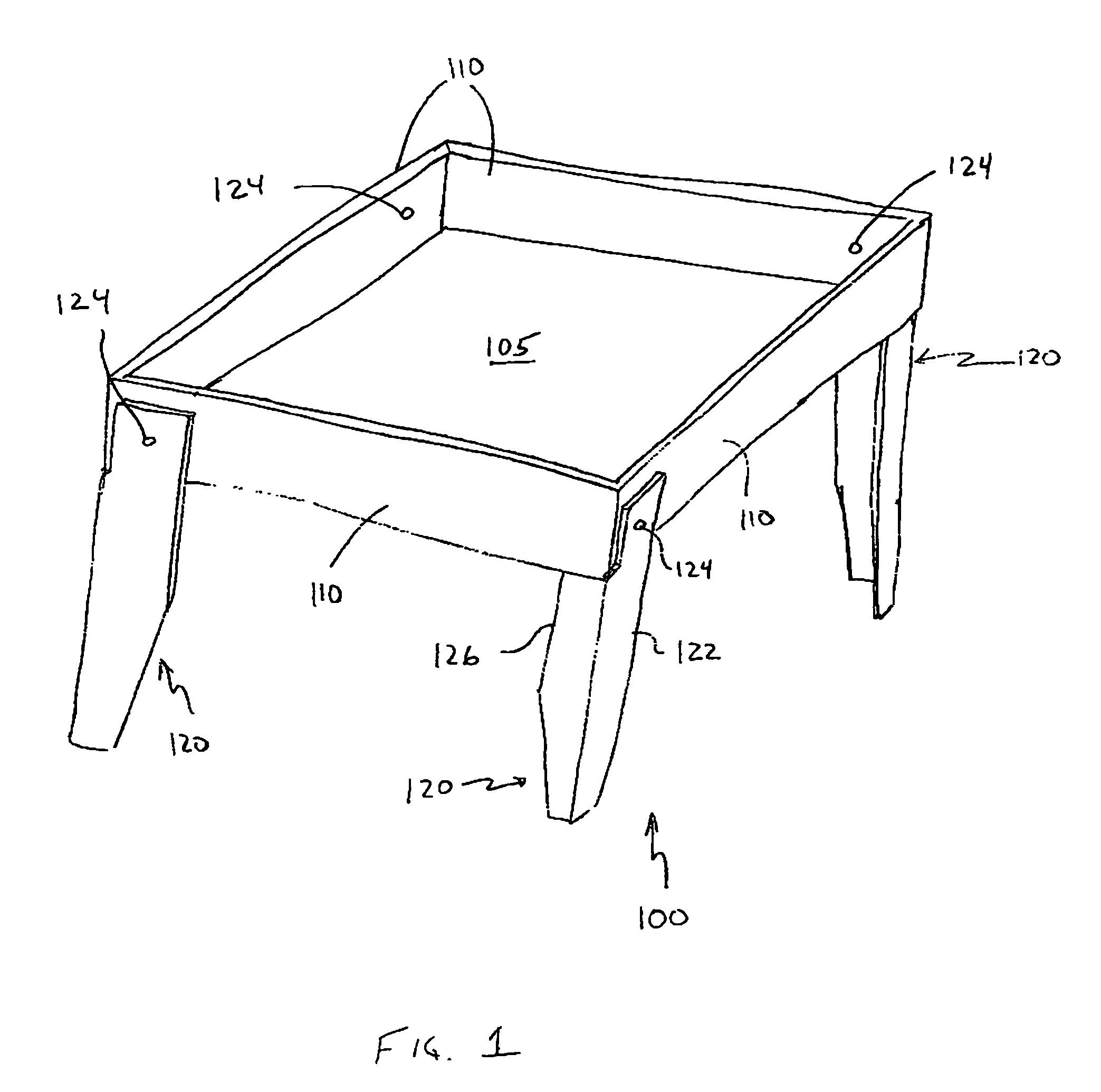Dutch oven stand
a technology for ovens and stands, applied in the field of oven stands, can solve the problems of disturbing the contents of the oven and/or the coals themselves, and affecting the stability of the oven, etc., and achieve the effect of adequate stability
- Summary
- Abstract
- Description
- Claims
- Application Information
AI Technical Summary
Benefits of technology
Problems solved by technology
Method used
Image
Examples
Embodiment Construction
[0075]Certain embodiments of the present invention will now be described with reference to the aforementioned figures.
[0076]As illustrated in FIG. 1, a stand 100 according to one embodiment of the present embodiment, generally includes a base 105 having four side walls 110 connected thereto, thereby forming a tray-like structure. The base 105 and sides 110 are supported by four legs 120. Each leg 120 includes a first section 122 and a second section 126 connected to each other at right angle, along the length of the leg 120, thereby providing substantially greater strength than a single rod shaped support leg, while also allowing legs 120 to be folded into a substantially flush position with sides 110 during storage and transport.
[0077]Each leg 120 is hingeably attached to a separate wall 110 by means of a rivet 124, although other attachment means, such as a screw, may be used. Because the legs 120 are hingeably attached, they can be positioned in either an opened (FIG. 1) or close...
PUM
 Login to View More
Login to View More Abstract
Description
Claims
Application Information
 Login to View More
Login to View More - R&D
- Intellectual Property
- Life Sciences
- Materials
- Tech Scout
- Unparalleled Data Quality
- Higher Quality Content
- 60% Fewer Hallucinations
Browse by: Latest US Patents, China's latest patents, Technical Efficacy Thesaurus, Application Domain, Technology Topic, Popular Technical Reports.
© 2025 PatSnap. All rights reserved.Legal|Privacy policy|Modern Slavery Act Transparency Statement|Sitemap|About US| Contact US: help@patsnap.com



